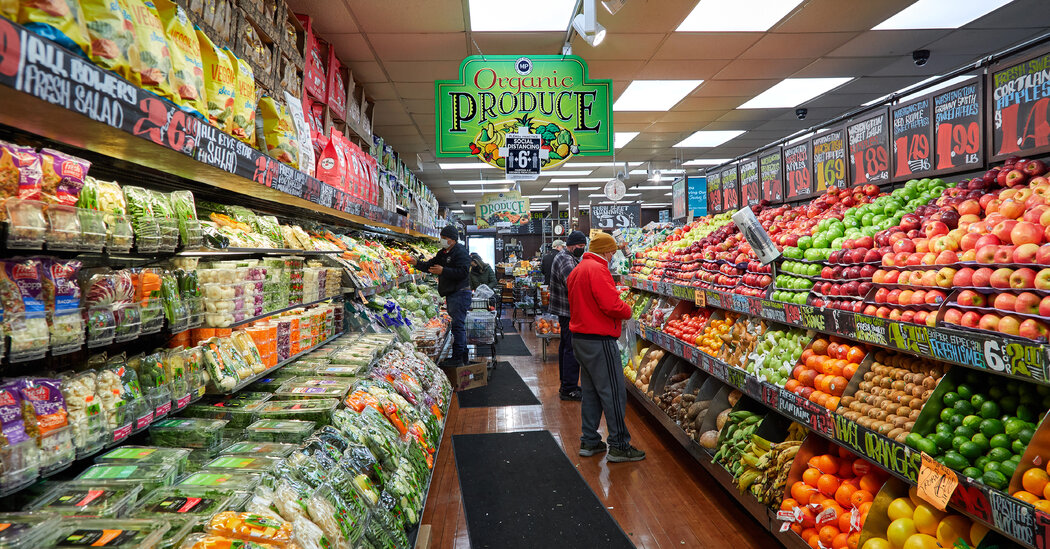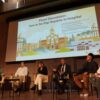
The annual instinct to improve your eating isn’t crazy.
Every year, many people set out to change their eating habits during the first few weeks of the year. Often, it turns out to be an unpleasant and demoralizing experience.
It doesn’t have to be.
The idea of occasionally resetting some of your food habits is not just a silly New Year’s custom. Mainstream American food culture is pretty unhealthy. We are surrounded by huge portions of highly processed food. We’re bombarded by advertisements telling us that we’ll be happy and hip if we eat more snacks and drink more alcohol and soda.
If you don’t occasionally stop to think about what you’re eating, you will probably end up with some bad habits. And even if you are mostly satisfied with your eating, you may have mindlessly accumulated some habits that are worth dropping.
I tend to avoid New Year’s resolutions. But every January, I do an informal audit of my eating and drinking patterns and try to tweak a few. Today’s newsletter will offer advice for anybody interested in doing something similar, with help from academic research and other recent pieces of journalism.
Yes, you can
First, the most basic point, because I know the blizzard of seemingly conflicting dietary studies can seem confusing: There is no mystery about how to eat better.
You don’t need to worry about the fine points of the latest scientific research. The overall picture has been remarkably consistent for years. A healthy diet revolves around mostly unprocessed foods, like vegetables, fruits, nuts, beans, whole grains, fish and some meat. Michael Pollan’s seven-word manifesto still holds: “Eat food. Not too much. Mostly plants.”
Obviously, we’re all going to eat some processed foods. Many are tasty. But many are also packed with artificial substances that sound like something out of chemistry class — and contain many calories per bite.
Which brings me to the second basic point: If you want to lose weight, as many people do, calories and exercise remain the two crucial levers. Yes, there are nuances: The rate at which people burn calories can change over time — and decrease if they go on a crash diet — which can make losing weight difficult, especially for obese people.
Yet the basic principle holds. As Ju Young Kim wrote in a paper for The Journal of Obesity and Metabolic Syndrome, “Reducing daily calorie intake is the most important factor for weight loss.”
The key issue is finding a sustainable way to eat healthily, in terms of both quality and quantity. Very few New Year’s resolution diets are sustainable. They can even be counterproductive, by leaving people with the mistaken impression that progress is impossible.
“A diet is an unpleasant and short-lived way to try to lose weight,” Traci Mann, who runs the health and eating laboratory at the University of Minnesota, told my colleague Tara Parker-Pope.
Joy and simplicity
What are some more promising approaches?
Remember the joys of good food. I like potato chips as much as the next person — maybe more when it comes to salt-and-vinegar chips. But they really are not as satisfying as a good fish taco, insalata verde, schnitzel, chicken tikka masala or plate of green beans with garlic and Sichuan peppercorns.
The academic study that I mentioned above found that the so-called Mediterranean diet was among the successful approaches to eating better. Remember: People who live in Mediterranean countries are famous for their love of eating well. It is not a sacrifice.
Rules can be helpful. Most of us don’t have the energy or patience to think constantly about whether we’re eating right. “The paradigms around willpower don’t work,” Dr. Judson Brewer, a behavioral scientist at Brown, said. It’s exhausting to analyze every snack, beverage and meal for its size and composition.
That’s why simple rules can make sense. They reduce the cognitive load of healthier eating.
When I wanted to lose weight years ago, I stopped drinking orange juice with breakfast, and I’ve never gone back. (Fruit is healthier than juice.) When my wife and I wanted to cut back on alcohol, we set aside three weeknights in which we don’t drink. (Our new treat is nonalcoholic beer, inspired by John Seabrook’s recent New Yorker article.)
Sugar is a unique problem in the American diet. Added sweeteners are all around us, including in many food products that you may not consider sweet. These sweeteners are highly caloric and can trick your body into wanting even more food. They are the driving force behind the global diabetes and obesity epidemics, which in turn cause many other health problems, including worse Covid-19 outcomes.
A focused effort to reduce sugar consumption can have big benefits — and doesn’t need to leave you grumpily hungry. Among the strategies: Read supermarket labels. Don’t let breakfast become a thinly veiled dessert. Eliminate soda from your diet, especially regular soda.
(Here’s a longer guide to eating less sugar, happily.)
Food rituals don’t need to involve junk food. “Over time, we can develop a number of habit loops that trigger us to eat when we’re bored, angry, stressed, tired after work or even just watching television,” Tara writes in her new guide to mindful eating.
Those triggers are part of human nature. But they are not really about the specific food or drinks. You can alter your rituals — after work, during an afternoon break, in front of the TV — so that they involve healthier food and drinks, like tea, coffee, popcorn, nuts, fruit or even a foamy nonalcoholic I.P.A.
Related: Times subscribers can sign up for the Eat Well Challenge through the Well newsletter. Well has also written about Dry January.
THE LATEST NEWS
Jan. 6 Anniversary
-
President Biden accused Donald Trump of holding a “dagger at the throat” of American democracy. “You can’t love your country only when you win,” Biden said.
-
Representative Liz Cheney and her father were the only Republicans in the House chamber during a moment of silence.
-
Dick Cheney, the former vice president, said he was “deeply disappointed” by his party’s response to the attack.
-
False accounts of the riot started spreading shortly after the police cleared the Capitol. A year later, those lies have taken hold.
The Virus
-
Supplies of effective Omicron treatments are scarce, forcing U.S. hospitals to ration them.
-
Six former Biden advisers urged him to adopt a new approach: Treat living with the virus as the “new normal.”
-
The Supreme Court will hear arguments today in cases challenging the Biden administration’s vaccine mandates.
-
Xi’an, a city of 13 million, has been on strict lockdown since last month as China continues its zero-Covid strategy.
Other Big Stories
-
Kazakhstan’s leader said he had instructed security forces to “fire without warning” as he moved to quell violent antigovernment protests.
-
Russia sent troops to aid Kazakhstan’s government, a move that could strengthen Vladimir Putin’s influence there.
-
Canada’s ban on conversion therapy takes effect today.
-
A dog named Tinsley helped lead the authorities to the site of a dangerous truck crash in Vermont.
-
A wildfire took their homes in an instant. These Colorado families are figuring out how to start over.
-
Pope Francis scolded couples who opt for pets over children. The reaction on social media was heated.
Opinions
The Republican Party threatens democracy. Democrats are defending it poorly, David Brooks argues.
A sign of crisis: Speculation about another American civil war has moved to the mainstream, Michelle Goldberg writes.
MORNING READS
Buyer beware: That $1,000 bourbon may be a phony.
The Hunt: A condo in a Brooklyn brownstone or a three-bedroom home? Here’s his pick.
On Tech: People have long predicted the death of cable TV, but this really might be it.
Modern Love: The benefits of bickering in marriage.
A Times classic: 11 crossword puzzles for new solvers.
Lives Lived: Peter Bogdanovich parlayed his love for Golden Age cinema into films like “The Last Picture Show” and “Paper Moon” — movies of bittersweet luminosity that conjured a bygone past. Bogdanovich died at 82.
ARTS AND IDEAS
African art, unified
For the first time, the Metropolitan Museum of Art has combined items from Ancient Egypt and sub-Saharan Africa in one display, “The African Origin of Civilization.”
The Met’s pieces from the African continent had always been shown in two sections far apart. That arrangement, according to the Times art critic Holland Cotter, reflected “antiquated, racist Western distinctions between ‘high’ culture (Egypt) and ‘primitive’ culture (most of the rest of Africa).”
The museum had very little African art from outside Egypt until the late 1960s, when it acquired a collection from Nelson A. Rockefeller. To the Met’s founders, Cotter writes, “almost any other art from Africa wasn’t ‘art,’ and belonged in the American Museum of Natural History.”
The combined display is likely to be temporary, while the museum renovates its Arts of Africa galleries. But for the next few years, at least, it will put a spotlight on a continent whose artistic achievements have long been overlooked. “Object for object, there isn’t an exhibition in town more beautiful,” Cotter writes.
PLAY, WATCH, EAT
What to Cook
This lemony white-bean soup is among our picks for what to cook during a winter storm.
What to Watch
20 television shows that may have slipped under your radar.
Quiz Time
How well did you keep up with the headlines this week? Take the news quiz.
Late Night
Stephen Colbert dedicated his monologue to the anniversary of the riot at the Capitol.
Now Time to Play
The pangram from yesterday’s Spelling Bee was ambulant. Here is today’s puzzle — or you can play online.
Here’s today’s Mini Crossword, and a clue: Where “you put my love,” in a Grammy-winning Beyoncé hit (five letters).
If you’re in the mood to play more, find all our games here.
Thanks for spending part of your morning with The Times. See you Monday. — David
P.S. The Times is buying The Athletic, the online sports news outlet, for $550 million.
Here’s today’s front page.
“The Daily” is about the state of American democracy.
Natasha Frost, Ian Prasad Philbrick, Tom Wright-Piersanti, Ashley Wu and Sanam Yar contributed to The Morning. You can reach the team at themorning@nytimes.com.













